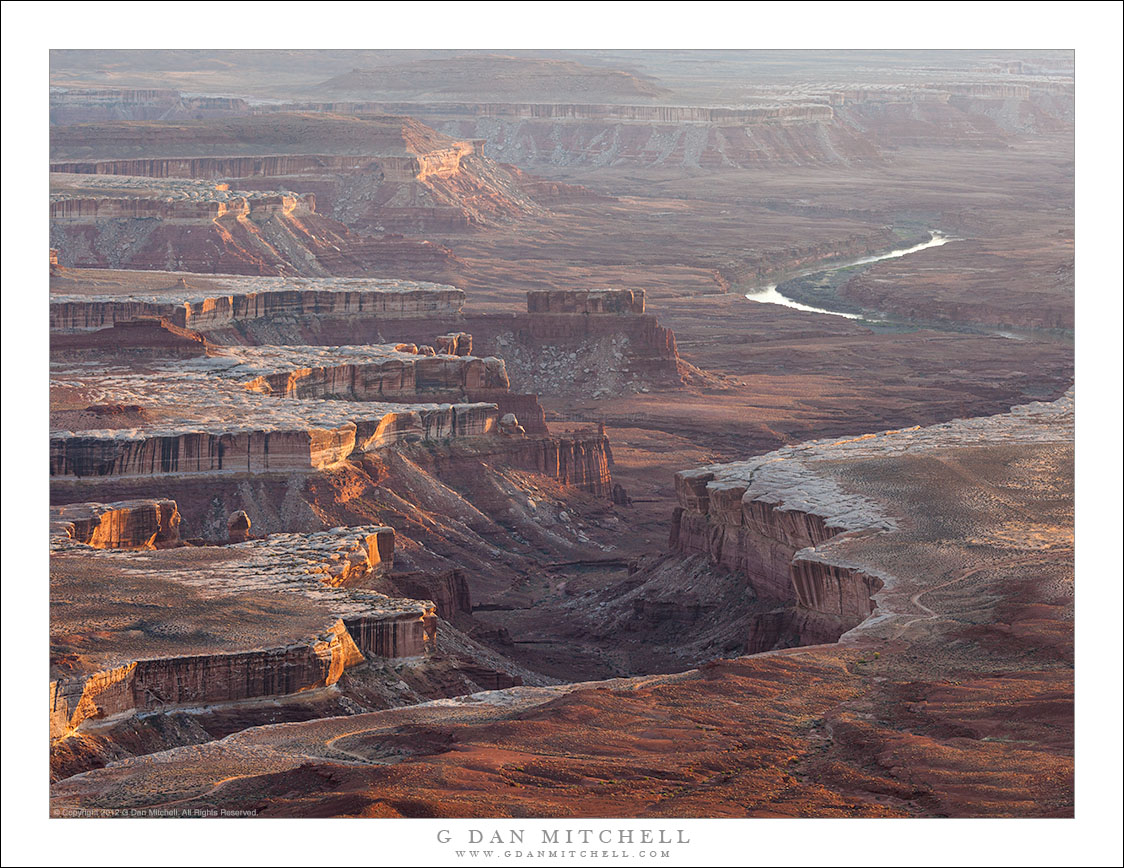
Green River Canyon. © Copyright 2012 G Dan Mitchell – all rights reserved.
A hazy evening overlooking the Green River Canyon at sunset.
The story of this photograph — and this version of the image — is a bit involved for the usual two-paragraph post, but here goes. The first part concerns the fact that this is not a new photograph, but that I created and shared in the past. However, as I looked at it during my pandemic project of reviewing old files, I began to feel that it could benefit from a bit of reinterpretation. The result is not radically different, but I like it a bit more. A slightly modified crop and a few other bits of post-processing revision provide a stronger sense of what I recall experiencing when I made the photograph.
And speaking of making the photograph, this is where I get to — yet again! — tell a story on myself. I made the photograph on the first day of my first-ever visit to this Utah national park and, as is my frequently practice, I entered this park having done essentially no prior research. My idea, at least most of the time, is that I don’t want to go to such places with too many preconceptions, preferring to go with my own personal response to the place. (Funny story: We passed a turn-off at one point to “Mesa Arch,” one of this things that every photographer must “capture” in this park. I had no idea it was there… and we kept driving.) So, we entered the park and drove up to the “island in the sky” mesa area and began poking around. Eventually we “discovered” a location with a spectacular panoramic view down into and across the magnificent canyon of the Green River. I later came to understand that perhaps I wasn’t the first person to visit this spot… to put in mildly.
G Dan Mitchell is a California photographer and visual opportunist. His book, “California’s Fall Color: A Photographer’s Guide to Autumn in the Sierra” is available from Heyday Books and Amazon.
Blog | About | Flickr | Facebook | Email
Links to Articles, Sales and Licensing, my Sierra Nevada Fall Color book, Contact Information.
Scroll down to leave a comment or question.
All media © Copyright G Dan Mitchell and others as indicated. Any use requires advance permission from G Dan Mitchell.



